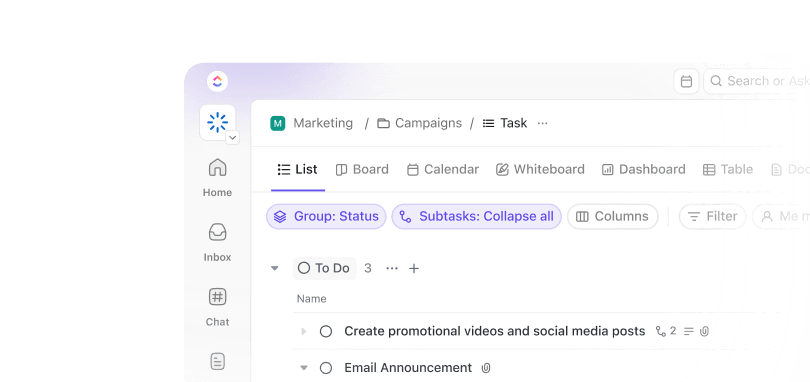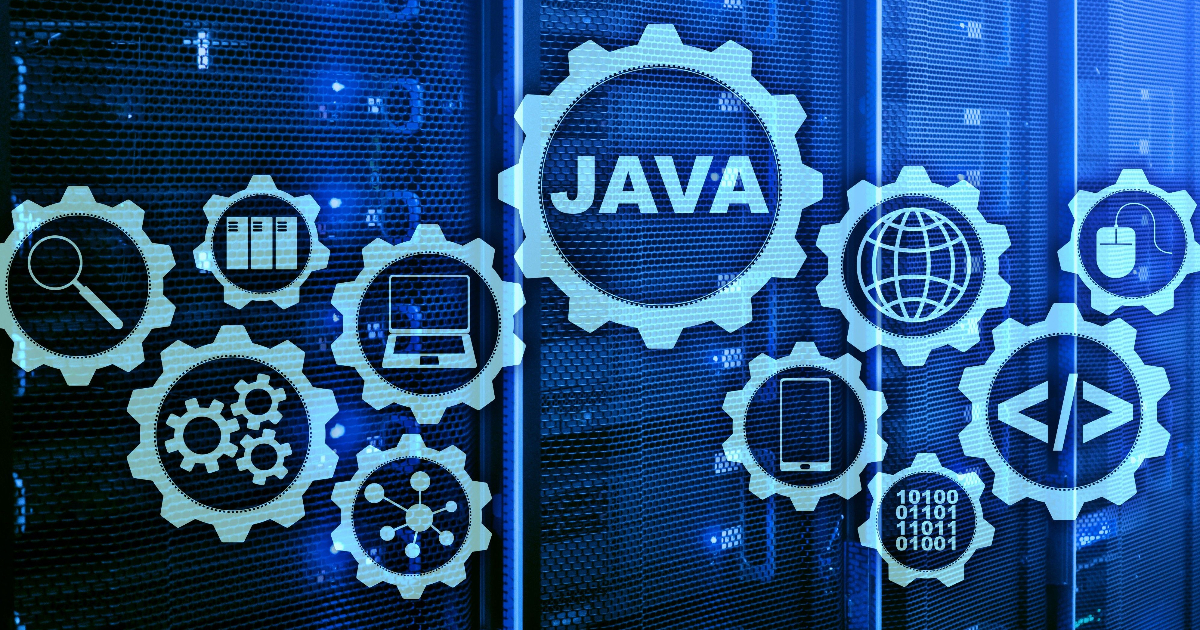Ever notice how ‘routine’ and ‘schedule’ often get used interchangeably, even though they’re not quite the same?
Think of a routine as familiar and flexible, like the habits you naturally follow each morning. A schedule, however, is more structured—it’s about planning tasks for specific times.
Knowing how these two work together can help you be more efficient in your daily activities, balance work and life, and even make the toughest tasks seem more manageable!
Let’s explore how routines and schedules can make your day more productive and solve common time management problems.
Routine vs Schedule: What’s the Difference and Why It Matters?
⏰ 60-Second Summary
- Routines are repeated actions, like morning rituals or workouts, that create structure and predictability in your day
- They improve productivity, reduce stress, and encourage self-care by cutting down on decision fatigue
- Routines focus on building consistency and habits, while schedules help prioritize tasks and manage deadlines
- Routines are flexible and reduce mental load but can lack time awareness or be easily disrupted
- Schedules are structured plans that assign tasks to specific time slots, enhancing time management and providing clear deadlines to reduce stress
- Schedules help manage multiple tasks and maintain focus but can feel rigid or overwhelming
- simplifies managing both by offering tools like its Calendar View, Task Prioritization, and Time Tracking, helping you stay organized, reduce stress, and boost productivity effectively
- Choose from dozens of daily planner and habit tracker templates in to make the most of your day
Understanding Routines
A routine is a set of repeated actions performed regularly, often without much thought. It’s the backbone of our daily lives and involves habits we follow regularly without overthinking them—like brushing our teeth, relaxing with family members, or brewing our morning coffee.
Effective routines share a few common traits: They’re consistent but flexible enough to adjust to life’s surprises. They’re practical and align with your goals and circumstances. Seek to establish routines that are not rigid but provide a natural rhythm to your day.
💡Pro Tip: Habit stacking is a popular way to build routines by pairing new habits with existing ones. For example, jotting down your daily affirmation can be paired with a stretching session.
So, why do routines matter? Here’s what they do for you:
- Boost productivity: By eliminating decision fatigue, routines free up mental energy for important tasks
- Improve focus: They create a flow state through consistent actions, making it easier to stay on track
- Reduce stress: The predictability of work routines brings a sense of calm, especially when you’re feeling overwhelmed
- Encourage self-care: By including healthy habits, routines help prioritize your well-being
Examples of daily routines can vary based on personal needs. A homeschooling mom’s daily routine may center around balancing lessons for her child and household responsibilities, while someone in a fast-paced business role might focus on maximum efficiency during the day.
Look for consistency in self-discipline examples. Think athletes or writers—they thrive on routines that build habits and accomplish goals.
💡 Pro Tip: Start your day off right with a morning routine checklist to set a positive tone, then follow it up with an afternoon routine. Having a checklist for both mornings and afternoons helps keep things balanced and your productivity flowing.
Understanding Schedules
A schedule is a detailed plan that organizes tasks or activities within specific timeframes of your day. It keeps you on track and effectively prioritizes your commitments. Unlike routines, which provide flexibility, schedules rely on structure and precise timing to allocate hours to specific tasks.
For instance, you can create a weekly schedule that maps out meetings, deadlines, and personal errands, ensuring nothing overlaps or is overlooked.
👉🏼Friendly Reminder: Effective schedules are realistic, adaptable, and prioritize what truly matters. A well-crafted schedule prevents chaos and encourages balance. It’s not about overloading your day but about allocating time wisely.
If you’re prone to distractions or need help managing time blindness, a set schedule can guide your focus and help you stay on track.
Some benefits of schedules are:
- Improved productivity: Planning tasks in advance helps you stay organized and avoid procrastination
- Better time management: Allocating time to important priorities gives you control over your day
- Reduced stress: Knowing what needs to be done—and when—eliminates unnecessary uncertainty
- Effective goal tracking: Breaking tasks into scheduled blocks makes it easier to monitor your progress
A study suggests that the average person spends only four hours or fewer daily on uninterrupted work. Employees also take about 23 minutes to refocus after each interruption. These stats highlight why structured schedules are essential—they help you regain focus and make the most of your time.
Comparing Routines and Schedules
Routines and schedules serve different purposes. Schedules bring structure through time-blocking, while routines build consistency with habits.
Differences between routines and schedules
Understanding the differences between a schedule and a routine can help you decide which works best and achieve your goals better. Check out this comparison:
| Aspect | Routines | Schedules |
| Definition | Flexible series of habits or tasks without fixed times | Structured plan with specific tasks and set times |
| Time commitment | Open-ended; doesn’t require strict timing | Time-bound; every task has a designated slot |
| Purpose | Focuses on consistency and forming habits | Prioritizes productivity and organized timing |
| Flexibility | Adaptable and easy to modify as needed | More rigid but can still allow for adjustments |
| Examples | Morning routines: brushing teeth, stretching, meditating, etc. | Work schedule: Attending meetings, handling deadlines, and managing tasks |
| Best for | Building habits and maintaining stability | Managing multiple responsibilities efficiently |
Advantages and disadvantages of routines vs. schedules
Both routines and schedules have distinct strengths and limitations, making them suitable for different situations and personalities. Here’s a closer look at what each offers:
Advantages of routines
- Flexibility: Routines don’t rely on specific time slots, allowing you to adapt based on the day
- Consistency: They help develop habits by reinforcing repetitive actions, making them second nature
- Less pressure: Without rigid time constraints, routines reduce stress and feel less restrictive
- Perfect for long-term habits: Building morning or evening routines—like an exercise habit or bedtime ritual—can even improve physical and mental health,
Disadvantages of routines
- Lack of time awareness: Routines can feel vague, potentially leading to inefficiencies or procrastination
- Challenging for complex tasks: Larger projects or tasks with multiple deadlines may suffer due to a lack of time-specific focus
- Easy to disrupt: Minor changes, like an unexpected meeting, can throw off your entire rhythm
Advantages of schedules
- Time management: Schedules assign specific time blocks for tasks, helping you stay organized and meet deadlines
- Productivity boost: Knowing when to do each task minimizes decision fatigue and improves focus
- Ideal for busy days: Packed days benefit from precise planning to avoid overlapping or missing responsibilities
- Goal-oriented: Schedules support goal tracking by allocating time toward measurable objectives
Disadvantages of schedules
- Rigid structure: A strict schedule can feel overwhelming and leave little room for flexibility
- Stress from overplanning: Overloading your day with tasks might cause frustration if you fall behind
- Requires precision: Schedules require accurate planning, which may not work well in unpredictable or dynamic situations
After weighing the pros and cons, you can choose the approach—or mix—that best fits your lifestyle.
🧠Fun Fact: When you repeatedly perform a task, the prefrontal cortex (where conscious decision-making happens) shifts its responsibility to the basal ganglia (responsible for habits and automatic processes). This means routines are handled better over time.
How routines and schedules complement each other
Routines and schedules work together to optimize time management by complementing each other’s strengths. Routines automate habitual actions, reducing decision fatigue and creating consistency. They make tasks almost instinctive, eliminating mental clutter. However, routines alone often lack the time-bound structure needed to meet deadlines.
Schedules address this gap by allocating specific time blocks to activities, ensuring accountability and timely completion. They’re instrumental when multiple deadlines are involved, providing structure where flexibility may fall short.
🌟 While routines automate actions, schedules offer the framework to manage them effectively within a set timeframe.
For example, instead of just “work on project X,” a scheduled time block like “work on project X from 2:00 PM to 4:00 PM” creates focus and prevents procrastination. Combining routines and schedules ensures consistent execution and clear accountability. Digital tools like planner apps help keep routines flexible and schedules clear, boosting overall productivity.
👀 Did You Know? David Allen popularized the two-minute rule, which suggests immediately completing smaller tasks within two minutes. Consistently doing this can turn small actions into a routine, helping reduce procrastination.
📮 Insight: Context-switching is silently eating away at your productivity. Our research shows that 42% of disruptions at work come from juggling platforms, managing emails, and jumping between meetings. What if you could eliminate these costly interruptions?
unites your workflows (and chat) under a single, streamlined platform. Launch and manage your tasks from across chat, docs, whiteboards, and more—while AI-powered features keep the context connected, searchable, and manageable!
Creating Effective Routines and Schedules
Creating a daily routine that fits your schedule is key to a productive day. It’s all about finding the balance between the two. You want a routine that fuels your energy and helps you efficiently move through your schedule.
Keep these tips in mind as you design and implement both:
Tips for developing personalized routines
Your routine should be tailored to your own goals and peak productivity time. While drawing inspiration from others is great, make sure it suits you.
- Define your goals: Clarify what you want to achieve
- Build a realistic daily routine: Start with tasks that fit your energy levels and lifestyle
- Design routines for different energy levels: Tackle tasks that need more attention when you’re most energized. Reserve the easier ones for low-energy moments
- Try out your new routine: Experiment with your routine to see what works
- Adjust and stick with it: Make tweaks as needed, but stay consistent
Consistency is the key to making your routine work. Don’t stress if your morning routine starts at different times each day—commit to it, and you’ll start seeing benefits over time.
💡Pro Tip: If you have multiple phone calls to make, batch them together during a specific time block. This helps you stay focused, reduce distractions, and keep your day on track without constantly jumping between deep and shallow work.
Tips for designing efficient schedules
Schedules are dynamic and change depending on your day’s tasks. Reviewing your schedule daily and using a time management method to organize your to-dos is essential.
Here are some quick tips:
- Write down all tasks and recurring events: Make sure everything is accounted for
- Rank your tasks in order of importance: Prioritize what needs to be done first
- Use a time management technique to build your schedule: Choose a method that fits your workflow, like time-blocking or the Pomodoro technique
- Set boundaries, including breaks and end times: Keep your workday balanced
- Refine your technique as needed: Adjust as you discover what works best
Check your schedule daily and set clear work boundaries. As your schedule changes, be ready to adjust your plan. Try using daily planner apps to manage your time efficiently for better organization.
Tools and strategies for maintaining routines and schedules
Maintaining routines and schedules is easier when you have the right tools and strategies in place. is the everything app for work that helps boost your productivity and keeps your routines and schedules on track.
Whether you’re managing projects, juggling meetings, or blocking time for deep work, brings these elements in one place, so you can focus on getting things done instead of switching between apps. Work routines should work for you, not against you. With its vast range of tools, simplifies task management and organization to help you build, refine, and stick to the schedule that keeps you at your best.
Want to visualize your schedule and plan better? Work with the Calendar View to manage your daily tasks and events by day, week, or month. With its drag-and-drop functionality, the view makes it simple to adjust your routine as priorities shift throughout the day.

We know—getting started is the most challenging but most crucial step to better routines and schedules! Here’s a solution: access readymade templates like the Daily Planner Template to help you organize your routine better.
With the planner template, you can set deadlines and track progress, making it easier to stay on top of routine tasks and special projects. Setting aside dedicated time for things like exercise, meal prep, or work tasks becomes simpler once you start charting your day out.
Now, a key component of maintaining an efficient routine is focusing on one task at a time. Multitasking can lead to distractions and errors, which only lengthen your workday. Tasks help you concentrate on one thing at a time.


You can break bigger projects down into manageable tasks, assign priority levels, and color-code them to identify what needs attention quickly. This approach lets you stay in the flow and reduces time wasted from context switching.
And once you have your ambitious list of to-do tasks, set goals. With Goals, you can set your own milestones and get clear steps to track your progress. Make every ambition into an achievable goal within seconds.


For example, if you’re a marketing professional, set a goal to complete a campaign with weekly milestones like brainstorming, research, and drafting. This helps track progress, maintain momentum, and stay motivated with each milestone reached.
Overall, ’s Time Management tools allow you to align tasks with your natural energy patterns. They also let you track time spent on tasks and estimate the duration for each one—never let a vital issue clash with a low-energy moment.


Before you scroll further: Have you checked in with yourself today? Schedule wellness breaks throughout the day on —yes, really. With features like Checklists and Reminders, you can set daily nudges for exercise, nutrition, and relaxation.
No need to fire up your phone’s reminder app and then get distracted by memes. You can do it all right where your work lives. For instance, you can set a reminder to drink a glass of water, go for a walk, or take a short break between tasks.
These small habits improve your focus and energy, allowing you to stay productive longer without feeling burned out.
And if you’re looking to stay accountable to your routine, get a hold of the Habit Tracker Template. Whether it’s a fitness target or a work-related task, you can set up daily or weekly goals, monitor progress, and keep track of your consistency.
Over time, this helps you build routines that stick and maintain essential habits, from making time for breaks to staying on top of long-term projects.
A great way to reclaim your day and concentrate on tasks that matter is to automate them. Here’s where Brain comes into play. It’s the AI assistant we all need! From brainstorming ideas and generating creative content to creating to-do lists and prioritizing your tasks, Brain can read through your existing workflow and help you do more with your day.
👉🏼Watch this video to learn how to automate your everyday tasks with AI Autopilot Agents in !
And, once you’ve found the proper flow, automate your routine tasks using Automations and keep them running like a well-oiled machine.
💡Pro Tip: Use the Schedule Blocking Template to plan, prioritize, and organize tasks smoothly. It’s a great way of ensuring your entire team is on the same page with meeting plans without the back-and-forth on emails
Schedule Your Routine with
When your routine and schedule work together, productivity improves. A routine gives you consistency; a schedule adapts to your daily demands. Together, they keep you on track.
If you need a tool to help you organize both, there’s . With tools designed to keep your mind on one tab and concentration levels high, the platform can help streamline your day better.
Want to simplify your workday and stay productive? Sign up for and start planning a daily schedule that works for you!


Everything you need to stay organized and get work done.















